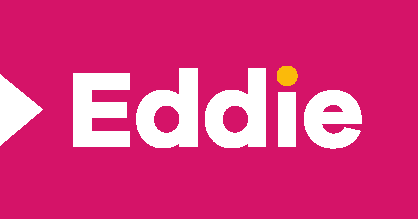Why are internal video messages more memorable than text-based communications?
Internal video messages are more memorable than text-based communications because they engage multiple senses simultaneously. The human brain processes visual information more efficiently than text, creating stronger neural connections when both audio and visual elements work together. Videos also trigger emotional responses through facial expressions, tone of voice, and body language, making the content stick in viewers’ minds longer. This multi-sensory experience activates different parts of the brain, forming more robust memory pathways than text alone can achieve.
Video messages outperform text communications in memorability because they create a richer, multi-sensory experience for viewers. When employees watch a video, they’re not just processing words—they’re absorbing facial expressions, vocal tones, gestures, and visual reinforcements of key concepts simultaneously.
Our brains are naturally wired to process and retain visual information more effectively than text. This is why you might forget an email but remember a video announcement from your leadership team weeks later. The combination of seeing and hearing information creates multiple memory pathways in the brain.
| Why Videos Are More Memorable | Brain Processing Effect |
|---|---|
| Multi-sensory engagement | Creates multiple memory pathways |
| Emotional connection | Serves as powerful memory anchor |
| Visual context | Enhances understanding and reduces cognitive load |
| Human connection | Generates greater attention and engagement |
Videos also forge an emotional connection that text simply cannot match. When employees see real people delivering messages, they respond with greater attention and emotional engagement. This emotional component serves as a powerful memory anchor, making the information significantly more likely to be remembered and recalled when needed.
Additionally, professional video content provides visual context that enhances understanding. Complex ideas become clearer when demonstrated visually, reducing the cognitive load required to process the information and increasing the likelihood of retention.
How does the human brain process video content?
The human brain processes video content through specialized neural pathways that make visual information particularly memorable. Our visual processing system is incredibly robust, occupying a significant portion of our brain’s cortex compared to other senses.
When watching videos, we benefit from the way our brains naturally prioritize images over words. This effect is amplified in videos because moving images create even stronger memory imprints than static ones.
- Multiple coding mechanisms: When information is presented in both visual and verbal forms simultaneously, we create two different types of memory codes instead of just one, significantly improving recall.
- Movement attention: Motion in videos naturally captures our attention—an evolutionary adaptation that helped our ancestors spot important changes in their environment.
- Facial recognition: We have dedicated neural circuitry for processing faces, making messages delivered by people more engaging.
- Visual cortex engagement: Videos activate substantial portions of our brain’s cortex, creating stronger neural connections.
The brain’s response to faces is particularly powerful. We have dedicated neural circuitry for facial recognition, which is why seeing a familiar face speaking directly to us (like a company leader) creates stronger engagement than reading their words in an email.
What elements make internal videos more engaging for employees?
The most engaging internal videos combine several key elements that capture and maintain employee attention while enhancing message retention.
Key Elements of Engaging Internal Videos
- Authenticity: Genuine communication over polished corporate-speak
- Personal connection with leadership: Direct messages that create transparency and accessibility
- Visual storytelling: Information presented in narrative frameworks that our brains naturally follow
- Emotional resonance: Content that evokes appropriate emotions creates stronger memory imprints
- Brevity and clarity: Concise messages that respect employees’ time while maintaining clarity
Visual storytelling significantly boosts engagement by presenting information in a narrative framework. Our brains are hardwired to follow and remember stories, making this an exceptionally effective way to communicate important messages that stick with viewers.
Emotional resonance also plays a vital role. Videos that evoke appropriate emotions—whether inspiration, pride, understanding, or even concern when delivering challenging news—create stronger memory imprints than emotionally neutral communications.
Brevity and clarity complete the formula. Internal videos that respect employees’ time by being concise while maintaining crystal-clear messaging tend to perform best. When messages are both brief and clear, viewers are more likely to watch to the end and retain the key points.
How can you create memorable internal video messages?
Creating memorable internal video messages doesn’t require Hollywood-level production—it requires thoughtful planning and execution focused on what matters most: clarity and connection.
- Keep videos concise and focused (2-3 minutes is ideal). For complex topics, create a series of shorter videos rather than one lengthy presentation.
- Use storytelling techniques to frame your message. Start with a relatable hook, develop key points with examples, and end with a clear call to action.
- Incorporate familiar faces from your organization to build authenticity and increase attention and retention.
- Ensure good production quality without overcomplication. Consider co-creation with professional editors for optimal results.
- Reinforce key points visually with on-screen text, simple graphics, or relevant imagery to create additional memory hooks.
This narrative structure helps information stick. When employees see people they know and respect delivering messages, they pay more attention and retain more information. This approach also builds authenticity and trust in the communication.
What are the benefits of using video for internal communications?
Beyond improved memorability, video brings numerous advantages to your internal communications strategy.
| Benefit | Impact |
|---|---|
| Higher engagement rates | More employees viewing, sharing, and acting on video content |
| Clearer communication of complex ideas | Abstract concepts become tangible and understandable, reducing misunderstandings |
| Time efficiency | A short video can replace a lengthy reading experience |
| Consistent messaging | Everyone receives identical content with the same tone, emphasis, and visual cues |
| Professional quality without expertise | Co-creation services allow you to focus on content while experts handle production |
With corporate video production services, you can access professional-quality results without requiring specialised in-house expertise. Through the benefits of video co-creation, you provide the authentic content while technical experts handle the editing and production.
What should you remember when creating internal video messages?
When creating internal video messages, remember these essential guidelines for maximum effectiveness:
Internal Video Creation Checklist
- Prioritize authenticity over perfection – Let your personality and passion shine through
- Focus on quality fundamentals – Good lighting, clear audio, and steady framing
- Maintain message clarity – Distill your message to its essential points before recording
- Consider viewing context – Design for viewing on computers or mobile devices in busy environments
- Embrace continuous improvement – Seek feedback and refine your approach with each video
Quality matters, but it doesn’t need to be complicated. With today’s smartphone technology and the benefits of video co-creation, you can achieve professional results without expensive equipment or technical expertise. Focus on good lighting, clear audio, and steady framing—technical partners can handle the rest in the editing process.
Message clarity should be your north star. Before recording, distill your message to its essential points. Ask yourself: “What is the one thing employees should remember from this video?” Then build your content around that core message.
Finally, embrace the iterative nature of video communication. Each video you create is an opportunity to learn and improve. Seek feedback, monitor engagement metrics, and continuously refine your approach to create increasingly effective internal video messages that your employees will remember and act upon.
If you’re interested in learning more, contact our team today

